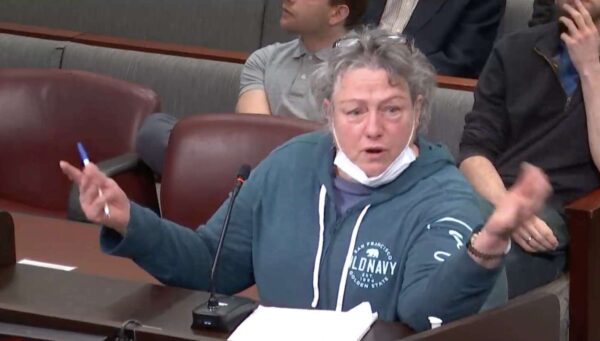
In the eight years local architect Brian Harner sat on the Arlington Planning Commission, he says he never saw more than 15 people show up for a meeting.
Last night (Monday), some 90 people registered to speak on the county’s proposal to allow by-right development of buildings with two to six — or even up to eight — units in districts that are now zoned exclusively for single-family homes.
“This is a divisive issue and there’s a lot of intensity around this,” Harner said of the proposal to allow what is dubbed “Missing Middle” housing.
The meeting marked a step forward for the proposal but a final vote on whether to adopt any zoning changes is still at least three months away. Monday’s meeting was devoted to public speakers and the Planning Commission will reconvene Thursday to decide whether to approve the county’s request to advertise public hearings on the draft plan as it is currently written.
“The Commission is hearing this item tonight for the specific purpose of giving feedback to the County Board about what is and what is not within realm of consideration at hearings that would be conducted in the spring,” Planning Commission Chair Daniel Weir said. “We aren’t here tonight to solve the problem — that is the County Board’s job. We are here tonight to give the board advice and guidance on how to tee up the issues and their conversation.”
The challenge for Arlington County is to draft a policy that encourages by-right development of homes that households making less than $200,000 annually can afford and helps to undo the lasting impacts of racially restrictive zoning policies, all while managing community concerns such as parking, school and infrastructure capacity, loss of neighborhood character and tree canopy.
County planner Matt Ladd says compared to the status quo, the proposed policies may spur the construction of homes affordable to more households earning upwards of $100,000, which would “benefit greater percentages of all racial groups.” That differs from Arlington County’s current affordable housing efforts, which are targeted at those earning 60-80% or less of the area median income.
Single-family homes are currently, on average, only attainable for households earning $200,000 or more, he said. On racial equity, the county determined the Missing Middle proposal would allow more households of color to buy in or remain in four census tracts — areas that already have percentages of people of color higher than the county average of 39%.
This draft puts some decisions to the Arlington County Board, including whether to establish a cap of no more than 42 Missing Middle-type developments per year, whether to allow up to six or eight units in a building and whether the number of units should be dictated by lot size.
“We are at a crisis and we must take bold action to build a county that is affordable, sustainable and welcoming to all,” said resident Noah Higgins, advocating for no development caps or density restrictions.
Some real estate agents in attendance disputed the notion Arlington has a housing crisis.
Retired agent Diane Dunston said on Monday, 290 homes were for sale, of which 45 had three bedrooms or more and were less than $1 million.
“Are there buyers who say they can’t find a home in Arlington? Of course there are, but what they’re really saying is, ‘I can’t find a home I like,” she said.
But Ballston-area resident Dan Alban said he and his wife had a hard time finding something to buy even with two attorney salaries, eventually settling on a townhouse — a housing type in shorter supply than detached homes, and a type would be permitted in more places under the proposal.
“Arlington is in the core of D.C.’s metro area, and Arlington needs to do everything possible to make housing available,” he said, advocating for eight-plexes and no development caps.
Julie Lee, a member of Arlingtonians for Upzoning Transparency, which opposes the proposal, advocated for different measures — ones that she said would prevent overdevelopment of neighborhoods with comparatively cheaper land values.
“We have read where communities like Ashton Heights, Halls Hill and Green Valley are being targeted by investors and without geographic dispersion, certain neighborhoods will bear an undue burden of development,” she said.
Another realtor, Kathy Rehill, said subdividing lots won’t make it easier to buy land but rather raise prices and drive teardowns of “perfectly good homes” to squeeze more money out of the land.
“How are you going to measure the success of this program? You’re going to allow by-right development to solve a housing crisis? You’re going to accelerate gentrification,” she said.
The issue has already divided neighbors, says Terry Arma.
“Friends are now enemies and you guys did this,” she said.
But Eric Malpeli, who lives in a townhouse development in a North Arlington neighborhood, says the division is nothing new.
“When our community was being built in the 1970s, it was considered something that was potentially unwelcome or a bit of a boogeyman,” he said. “Fifty years later… we fit so seamlessly into the neighborhood that I don’t think many of the single-family homes around us — including some that face our neighborhood that have signs opposing Missing Middle — realize they’re saying no to people like us.”

